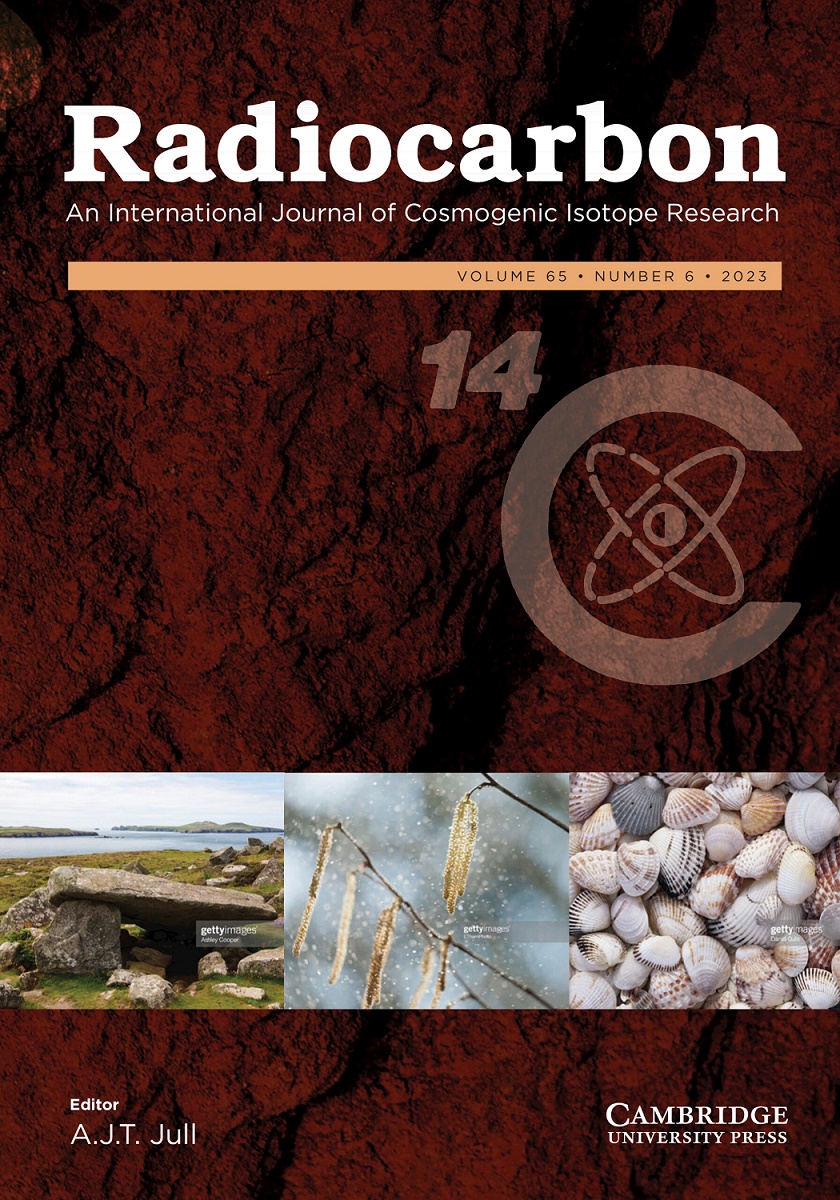CHANGES IN FOSSIL CO2 EMISSIONS IN MEXICO CITY DURING THE COVID-19 LOCKDOWN DEDUCED FROM ATMOSPHERIC RADIOCARBON CONCENTRATIONS
IF 1.3
3区 地球科学
Q2 GEOCHEMISTRY & GEOPHYSICS
引用次数: 0
Abstract
ABSTRACT We present atmospheric radiocarbon concentrations in CO 2 integrated samples taken between January 2019 and December 2021 in the Mexico City Metropolitan Area (MCMA) and explain the variations in terms of changes in emission sources associated with the COVID-19 lockdown restrictions imposed from March 2020. Δ 14 C values for samples collected during 2019 range between –44.15‰ and –13.17‰, with lower values during months with higher fossil fuels consumption and air stagnation, whereas higher values were found for periods with high number of fires around MCMA or wet months with higher contribution of heterotrophic respiration. For samples collected during 2020, Δ 14 C values range between –17.7‰ and 2.25‰, with an increasing trend immediately after the initial lockdown and higher values obtained for samples collected during lockdown phases 2 and 3 and the period of extremely high epidemic risk. This agrees with the 38% and 52% decrease in gasoline and diesel sales. Once essential activities gradually opened from July 2020, Δ 14 C follow a decreasing trend as vehicle traffic started to increase again. Δ 14 C values for samples collected during 2021 range from –32.89‰ to –10.27‰, with the higher value obtained during a period of extremely high epidemic risk with a 30% reduction in gasoline and diesel consumption. Despite the complexity of emission sources in MCMA, from Δ 14 C variations it was possible to identify changes in fossil CO 2 emissions resulting from the significant reduction in vehicle traffic due to the COVID-19 lockdown and the restrictions imposed to control transmission of the disease.根据大气放射性碳浓度推断,新冠肺炎封锁期间墨西哥城化石二氧化碳排放量的变化
摘要:我们提供了2019年1月至2021年12月在墨西哥城大都市区(MCMA)采集的二氧化碳综合样本中的大气放射性碳浓度,并解释了与2020年3月起实施的COVID-19封锁限制相关的排放源变化的变化。Δ 2019年收集的样品的14c值范围在-44.15‰至-13.17‰之间,在化石燃料消耗较高和空气停滞的月份值较低,而在MCMA周围火灾数量较多的时期或异养呼吸贡献较大的潮湿月份值较高。对于2020年采集的样本,Δ 14c值在-17.7‰~ 2.25‰之间,在初始封城后立即呈上升趋势,在封城二、三期和疫情风险极高时期采集的样本值更高。这与汽油和柴油销量分别下降38%和52%的情况一致。从2020年7月开始,基本活动逐渐开放后,Δ 14c随着车辆流量的再次增加而呈现下降趋势。Δ 14 2021年收集的样品的C值范围为-32.89‰至-10.27‰,在流行病风险极高的时期获得较高的值,汽油和柴油消耗量减少了30%。尽管MCMA的排放源很复杂,但从Δ的14c变化中,可以确定由于COVID-19封锁和为控制疾病传播而实施的限制导致车辆交通大幅减少而导致的化石二氧化碳排放变化。
本文章由计算机程序翻译,如有差异,请以英文原文为准。
求助全文
约1分钟内获得全文
求助全文
来源期刊

Radiocarbon
地学-地球化学与地球物理
CiteScore
16.20
自引率
6.00%
发文量
85
审稿时长
6-12 weeks
期刊介绍:
Radiocarbon serves as the leading international journal for technical and interpretive articles, date lists, and advancements in 14C and other radioisotopes relevant to archaeological, geophysical, oceanographic, and related dating methods. Established in 1959, it has published numerous seminal works and hosts the triennial International Radiocarbon Conference proceedings. The journal also features occasional special issues. Submissions encompass regular articles such as research reports, technical descriptions, and date lists, along with comments, letters to the editor, book reviews, and laboratory lists.
 求助内容:
求助内容: 应助结果提醒方式:
应助结果提醒方式:


